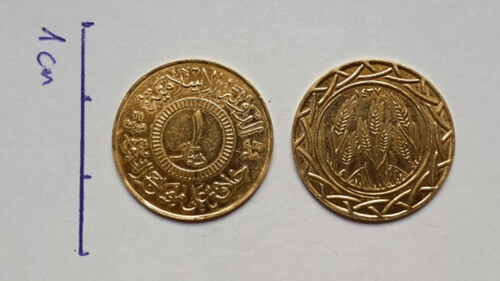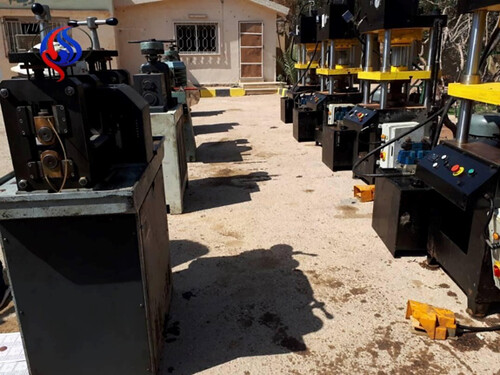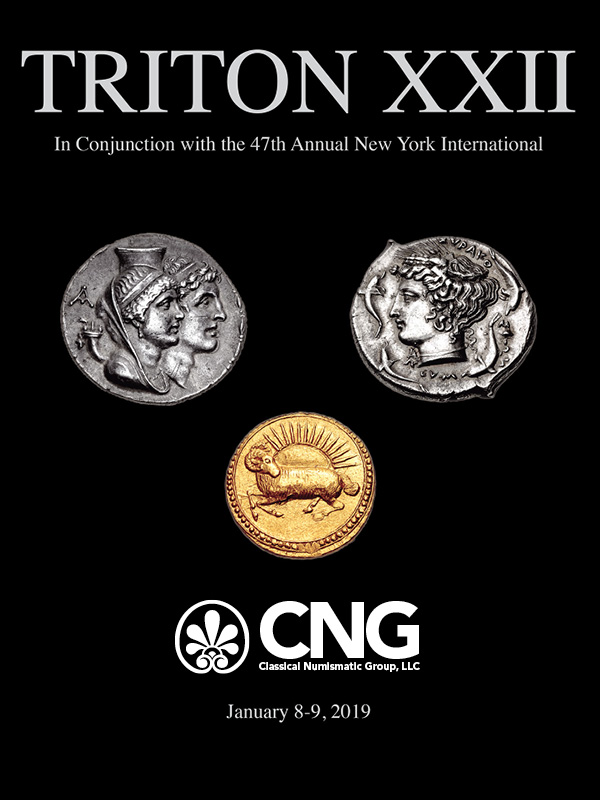
PREV ARTICLE
NEXT ARTICLE
FULL ISSUE
PREV FULL ISSUE
AN ANALYSIS OF ISIS COIN PRODUCTIONOlivier Moos writes: I'm a Swiss historian and I recently published an essay online about the Islamic State coinage production in Syria and Iraq. Given the subject, I thought your readers might be interested. The E-Sylum proved indeed very helpful to support some of my hypotheses. I'm glad to hear our earlier articles were useful. Olivier's analysis is very thorough, and compares the announced candidate designs with the coins actually produced. Here's a lengthy excerpt, but be sure to read the complete analysis online - it's the best report I've seen yet on this series which is so enigmatic to those of us in the West. -Editor Although a theoretically ever-expanding Caliphate does not recognize international borders or traditional states, its leadership nonetheless strived to reproduce all the traditional signs of sovereignty. Last but not least, they created a new currency. Minting of dinars and dirhams was the final component in solidifying the physical reality of the group's millenarian utopia. In November 2014, issue 5 of the Islamic State English-speaking magazine Dabiq (p. 19) unveiled a new currency to be soon minted and put into circulation: a series of seven coins divided between two gold dinars, three silver dirhams and two copper fulûs (sing. fils or fals). This new ISIS currency was meant to replace the paper money of Syrian Pound, Iraqi Dinar and US dollar, the three most commonly used currencies in the area then controlled by the Islamic State. Predictably, the group's new financial policy was both brief and chaotic. However, it did serve what was one of its main purposes, adding a further layer of legitimacy and authenticity to the Caliphate-building endeavour. This was a rather revolutionary strategy within a Salafi-Jihadi ecosystem articulated on small insurgency groups and clandestine networks. The gold dinar and silver dirham came to gild the false ceiling of a utopian State already overloaded with kitsch paraphernalia exalting the return of the King and cavalry charge, jihadi-warrior lyrics, baroque prophecies and apocalyptic battles.  Dinar and dirham, Omayyad period, between 7th and 8th century The coinage put into circulation were partially inspired by 7th century Omayyad models. They went through different stages of development but usually bore the profession of faith (shahâda) surrounded by references to the prophetic mission of Mohammad, an extract of the Qur'an, and the minting date. Borrowing characteristics from the first Islamic coins produced by Abd al-Malik Ibn Marwan's (646-705) caliphate was an attempt to recapture some of the prestige of the first Arab dynasty that had made Damascus the heart of an Empire. The rejection of banknotes signalled a decisive exit from the international financial system... Gold Dinars   The engraving on the reverse is the wheat sheaf of 7 ears and represents the “blessings of sadaqah (voluntary charity)” (Dabiq 5). It refers to a Qur'anic verse: “The example of those who spend their wealth in the way of Allah is like a seed [of grain] which grows seven spikes; in each spike is a hundred grains. And Allah multiplies [His reward] for whom He wills.” The main symbol remains the same on the 2014 prototype but with a large groove added on the edge. The year is 1437 of the Hegira (i.e. between October 15, 2015, and October 2, 2016). The general aesthetic of the obverse is different but provides the same information: a circular legend identifies (on top) the Islamic State (ad-dawla al-islâmiyya) as the issuing authority, and states (bottom) “a Caliphate according to the model/method of the prophecy” (khalifaton ‘ala Minhaji Al-Nubuwwah). The same legend is found on all the coins. The central circle contains the denomination numerals 1 Dinar flanked on each side by indication of weight (4.25 gr.) and carats (21). Those numbers are equivalent to the weight, purity (87.5%) and size (2 cm) of the first Islamic dinars produced at the end of the 7th century. It is interesting to note that, in 2015, while the Islamic State was still announcing a dinar of 21 carats, the spectrometric analysis of the 1 gold dinar specimen pictured above reveals a higher purity: an alloy composed of 91.58% of gold and 8.42% of copper, i.e. 22 carats. Why a higher purity? Our hypothesis, further developed in the third chapter, is that the Islamic State produced a first and quantitatively modest cycle of minting, circa June-October 2015, including an unknown number of 21 carats dinars. There is circumstantial evidence that this first cycle of production included, or was put into circulation at the same time as, a number of gold-plated dinars of substantially lower quality. This predictably tarnished the reputation of the new currency and triggered a second cycle of minting. The initial choice of 21 carats was probably not inspired by the standard of Omayyad coinage, but was due to its common usage in the Arab world. Nostalgia has its limits, as the modern and clean aesthetic of the emblematic 5 gold dinar illustrates. Indeed, nothing “traditional” to it. I was interested to see this confirmation of the existence of the gold coin. The silver and copper coins are photographed and analyzed as well - their match the ones i acquired for my collection and illustrated in the earlier articles. Also of interest for numismatists is a discussion of the minting process. -Editor According to interviews collected by Religioscope, the Islamic State had established several minting workshops. We know from the Turkish press that in 2015 a clandestine workshop was set up in Sahinbey, halfway between Gaziantep and the Syrian border. We also have evidence indicating that a striking factory was established in 2015 in Mosul, Iraq, and later was moved or replaced, possibly in Mayadin, Syria. In March 2018, Al-Alam, an Arabic language outlet based in Iran, published a few pictures of what is described as ISIS minting equipment in Hasrat, a small village near Abu Kamal in the south east corner of Syria, recently recaptured by the Syrian armed forces:  The authenticity of these specimens is solid, a robust body of evidence indicates that they were produced and distributed by the Islamic States in Syria and/or Iraq as of 2016. We compared several collections of coins (i.e. four sets of six coins ranging from 1 gold dinar to 5 fils, unfortunately none including the 5 gold dinar) and all collections were identical in size, weight and design and were provided by different sources based in Syria. It is worth noting, however, that only the set illustrated in this article went through a spectrometric analysis. The Syrian sources from Raqqa with whom Religioscope conducted interviews in the spring of 2018 explained that a substantial number of their countrymen had hoarded dinars and dirhams before quickly selling or melting them as soon as the followers of the Caliph had retreated. It is likely they also melted these down to avoid being accused as sympathizers or members of the Islamic State by the new occupying forces. See the end of the article for the conclusions of the analysis. This is by far the best discussion I've seen to date. Thank you for sharing this with us! It's a fascinating contemporary topic; these early reports and studies will provide a basis for all subsequent cataloging of the pieces in the numismatic literature. -Editor To read the complete article, see: To read the referenced E-Sylum articles (each of these has links to still more), see:  Wayne Homren, Editor The Numismatic Bibliomania Society is a non-profit organization promoting numismatic literature. See our web site at coinbooks.org. To submit items for publication in The E-Sylum, write to the Editor at this address: whomren@gmail.com To subscribe go to: https://my.binhost.com/lists/listinfo/esylum All Rights Reserved. NBS Home Page Contact the NBS webmaster 
|